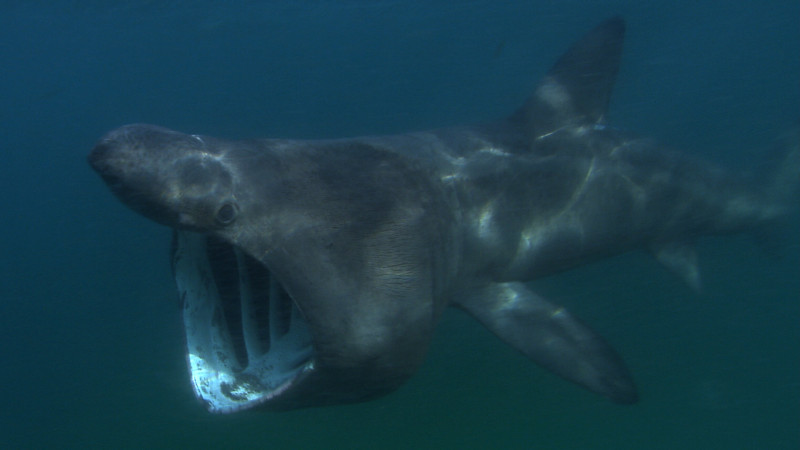
Basking Shark Facts
- Perhaps most notably, the astounding Basking Shark ranks as the second largest of all known fish in the world. In point of fact, only the truly breathtaking Whale Shark exceeds this incredible shark in terms of sheer size. Also known as the Cetorhinus maximus, this animal, unlike the Whale Shark, faces a man-made, ongoing danger. That’s because it remains a commercially fished species in parts of its range.
- In addition, of further interest to some is the fact that this remarkable creature represents the only surviving member of its Family. In the mid 18th century, the bishop/botanist, Johan Ernst Gunnerus, became the first individual to officially describe the fascinating species. This surprising recognition occurred based on his observations of a single specimen. This sole individual he saw in the country of Norway.
- Quite unfortunately, the IUCN presently lists this magnificent creature as Endangered, on its Red List of Threatened Species. It holds this status due to the fact that its numbers have plummeted dramatically in the past century. This primarily occurred due to mans over exploitation of it. However, it now faces the additional threat of climate change. Sadly, no widely organized conservation efforts as yet exist.
Related Articles
Basking Shark Physical Description
Firstly, the magnificent Basking Shark attains a truly impressive physical size. Secondly, unlike many species throughout the world, this fish shows no discernible degree of sexual dimorphism. Mature specimens of both genders attain an average length of about 26 ft (7.9 m). But, exceptional specimens occasionally occur. The largest individual ever reliably studied measured 40.3 ft (12.27 m) in length, and weighed 36,000 lb (16, 329 kg).
Furthermore, it also possesses the elongated body shape typical of related species. Unlike the Great White Shark, which some people mistake it for, its gill slits nearly encircle its head. In coloring, though, individuals vary widely in appearance. This often depends on the region the individual inhabits. Typically, specimens display either a dark brown, black, or blue on the back portion of the body. Meanwhile, the front usually shows a dull white.
Incredibly, the liver of this amazing animal accounts for about 25% of its entire body weight. It runs the entire length of the abdomen. However, its mouth itself forms its most incredible and recognizable feature. That’s because this enormous cavity opens up to a remarkable width of more than 3 ft (1 m). This, in turn, has a lining of numerous rows of teeth. But, unlike predatory sharks, these teeth only average 0.2 in (5 mm) in length.
- Kingdom: Animalia
- Phylum: Chordata
- Class: Chondrichthyes
- Order: Lamniformes
- Family: Cetorhinidae
- Genus: Cetorhinus
- Species: C. maximus
Basking Shark Distribution, Habitat, and Ecology
Quite fortunately for it, the mesmerizing Basking Shark has historically inhabited a remarkably wide range. This endemic territory includes the Mediterranean Sea, the north and south portions of both the Atlantic and Pacific Oceans, and also the sea of Japan. Furthermore, the distinctive fish also appears near New Zealand, as well as off the southern coast of Australia.
Predominantly, the fabulous creature inhabits the pelagic zone, that areas consisting of open ocean. More specifically, it generally appears in waters with a depth ranging from 656 – 6,562 ft (200 – 2,000 m). This generally places it along the continental shelf in the area it appears. Despite this fact, though, individuals often can be seen moving at or near the surface of the water. In addition, it also sometimes ventures into bays for short periods of time.
The fabulous Basking Shark feeds entirely as a filter feeder. To that end, it spends much of its time swimming quite slowly, with its gigantic mouth gaping wide. The fish does this to capture the huge quantities of food it consumes, primarily consisting of plankton. Yet, it also consumes the smaller quantities of tiny crustaceans that it captures along with the plankton. Finally, researchers currently know very little about its reproductive biology.
Species Sharing Its Range
Check out our other articles on Lange’s Metalmark Butterfly, African Penguin, Fernando de Noronha, Tuatara, Sea Marigold, Numbat, Geoffroy’s Cat, California red-sided garter snake
